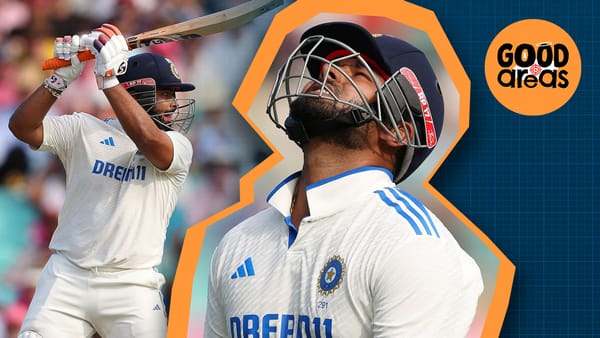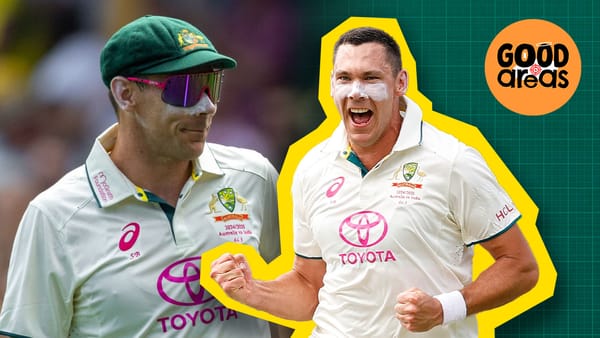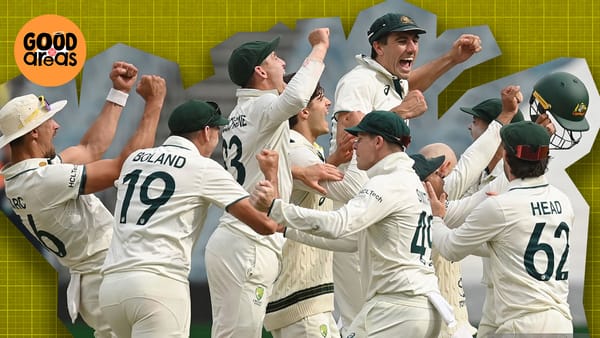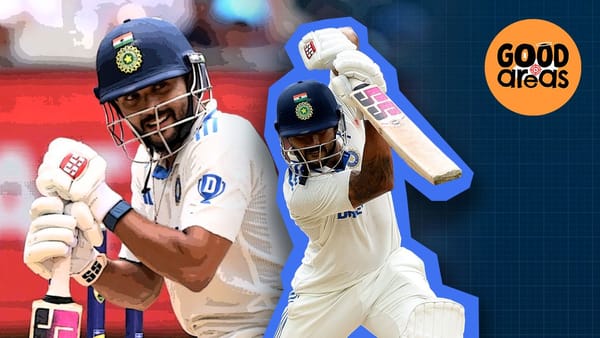Cricket in the USA
The USA had a great bowler, and then, nothing for a very long time.
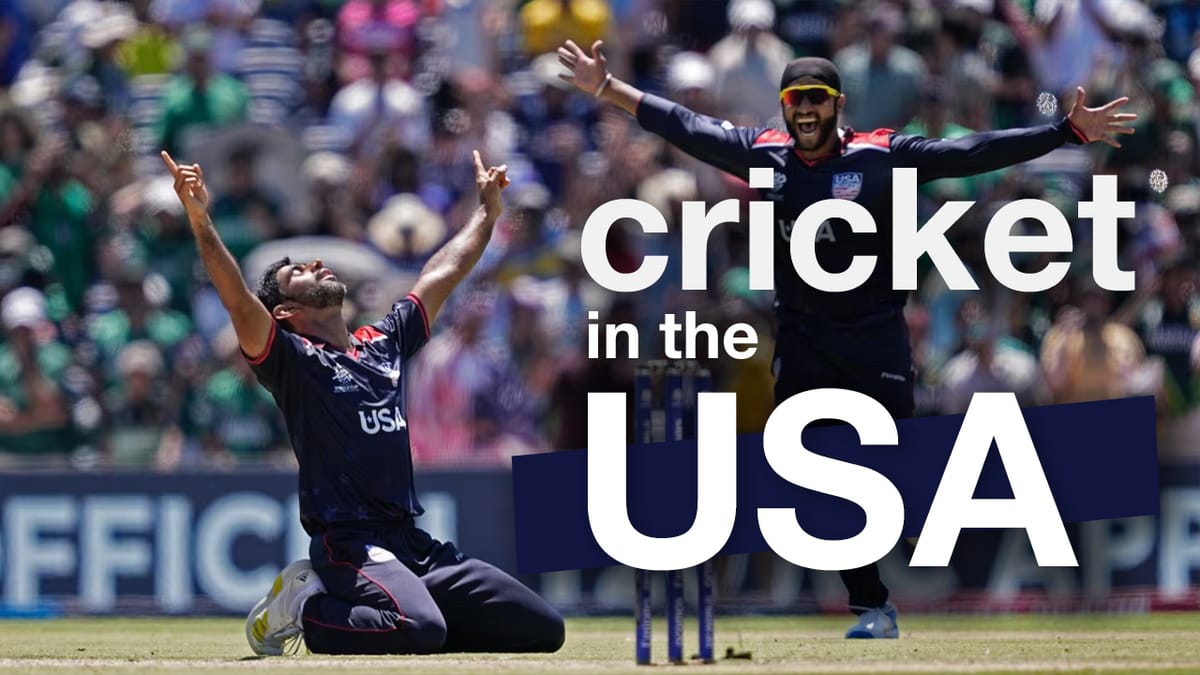
We have no photographic evidence of Frankenstein’s monster keeping wicket, but we know that the man who brought that character to cinematic glory took the gloves. If anything, the history of cricket in the US is even more of a horror film.
That’s sad because one of the greatest early bowlers was an American.
A man who Don Bradman called “America’s greatest cricketing son”, Plum Warner said “at the top of his power and speed, was at least the equal of the greatest of them all.”
A Philadelphian superstar called John Barton King.
In recorded matches, Bart King had over 16,000 runs at an average of 33, with 29 hundreds. Add the unarchived ones, and the hundreds go up to 39. In 1902, he scored 344 in a match.
And that was not even what he was renowned for. He was a bowler, a devastating quick who took victims in bulk. His 2,000 wickets came at 10.67. In first-class cricket alone, he took 415 wickets at 15.65. These were 42% of his team’s wickets. You may gasp for air now.
King was among the pioneers of a craft that is still one of the greatest weapons of the new-ball bowlers. They called it the swerve back then, which we now describe as swing.
Like most American cricketers of that era, he had played some baseball in his early days. When he came to cricket, he brought with him the ability to swerve the ball in the air. And like baseball pitchers, he hid his grip. Almost 100 years before Wasim Akram and co would do it.
Overarm bowling had been legalised in 1864, but bowlers were still learning new crafts. King figured out that the new ball could swing in the air. He learnt how to make use of a strong breeze.
King the baseball pitcher used to throw the ball, but King the fast bowler had to bowl without bending his arm. But he had figured out the mechanics, so he worked hard and developed a ball that came in viciously in the air.

Back then, he called this ball the 'angler'. We now call it the inswinger.
How good was King? In 1893, the Australian Test squad toured the USA on their way back from an Ashes tour. The Gentlemen of Philadelphia made 525. Batting at number 11, King made 36. The Australians were then clueless against King’s swerve bowling. He took seven wickets, and Philadelphia won by an innings.
Australian captain Jack Blackham told the Americans: “You have better players here than we have been led to believe; they class with England's best.”
King’s Philadelphians beat the Australian Ashes sides two more times – in 1896, and sixteen years later, in 1912. He took 17 wickets in these matches.
King toured England in 1897 and took 72 wickets at 24. In 1903, it was 78 at 16. And by 1908, it became 73 wickets at 12.26. It was the best bowling average of the summer. When I say ‘best bowling average’, I include the English bowlers who played in the County Championship.
Against Sussex in 1897, he scored 58 and took 13 wickets, 10 of them bowled. He bowled Ranji first ball. The Jam Sahib later said that it ‘sprang in at him like a tiger’. He was so impressed that he gifted King a lighter, replete with a ruby and his own insignia.
King also averaged 20 with the bat on these trips. Against Surrey in 1903, he took six wickets, but also made 98 and an unbeaten 113.
King was born in the wrong place, at the wrong time. He would have played Test cricket had he been born in Australia, England or South Africa. But he had to remain content with playing first-class and club cricket.
He was not born rich. If they addressed him as Mr King in England, he would respond with “Hallo, call me Bart”. Since he toured with the Gentlemen of Philadelphia, they would ask, “Aren’t you a gentleman too?”
“Oh no sir, I’m a professional,” he would say. He was not born an aristocrat, and had no qualms about admitting to the fact.
He played cricket in an era when it had become a sport for the elite in the USA. He could do that because the rich wanted him to play for their side, so they got him a job in the insurance industry.
King played for about two decades before the First World War, in what we call the Golden Age of Cricket. His name should be mentioned in the same breath as the greats of that era, Hirst and Rhodes, Trumper and Hill, Woolley and Hobbs, Giffen and Trott, Briggs and Lohmann, Stoddart and Jackson, Sinclair and Faulkner. He was that good.
In fact, I think this story tells it best, which I can only hope is true. When he was in England, he was so dominant that to get around the rules on having to be from a county to play for them, a county reportedly offered to marry him to a rich local widow if he chose to play for them.
The USA had a great bowler, and then, nothing for a very long time.
There is documentation of the Dutch settlers of New Amsterdam in Manhattan Island playing a game of hitting the ball in 1656. Some have argued that this might be cricket, but there is no proof.
The first definitive mention was in 1709, in the diary of William Byrd, a British planter, author, and slave owner in Virginia. He wrote: “I rose at 6am & Colonel Ludwell, Nat Harrison, Mr. Edwards & myself played cricket."
Cricket became very popular in the USA over the 18th century. The first recorded match was in 1751, between New York City and a London XI. That was seven years after the first Laws of Cricket were written in England. When Benjamin Franklin returned from England in 1754, he brought with him an early version of the Laws.
The Americans also invented a sport called wicket. There were 30 fielders and three innings, and the matches got over inside a day. In 1778, two years after the USA became independent, George Washington played wicket at least once.
Of course, baseball itself is either taken from cricket, or shares an ancestor with the sport.
After independence, the Americans lost interest in most things British. But cricket remained surprisingly popular. By 1800, about five thousand people were playing cricket in just the two cities of Philadelphia and New York. In another fifty years, it spread to 22 states, and about a thousand clubs. Newspapers would cover more cricket than baseball.
The first of these clubs had been founded in Haverford in 1833. In 1840, a man called Philpotts had invited the St George’s Club of New York to Toronto for a match.
In 1844, the Canadians came over for the first international match and sporting contest - no matter what the Yachting fans tell you. Canada won by 23 runs in front of at least five thousand people. Some sources even say ten thousand.
The USA and Canada still play cricket matches for the K.A. Auty Cup. This is the longest-running rivalry between any two countries in any sport.
In 1859, a group of English cricketers toured North America. This was the first English cricket squad to tour anywhere. A very strong team, consisting of George Parr, John Wisden, Robert Carpenter, William Caffyn, H.H. Stephenson, John Lillywhite. Two more teams came from England in 1868 and 1873. W.G. Grace was part of the second side.
Cricket was at the peak of its popularity in the USA around this period. But the first blow came during the Civil War. The soldiers at the camp realised that baseball took only a couple of hours and could be played anywhere, but cricket lasted all day. It also needed a pitch that needed to be prepared over time.
You also had people like Harry Wright, who was a bowler and coach at the St George’s Club in New York and the Union Cricket Club in Cincinnati. He also played baseball. The Cincinnati Red Stockings signed him up after the Civil War. He took the strategies, batting techniques, and field placements from cricket to baseball.
In 1869, the Red Stockings played 57 matches and lost none of them. Everyone wanted to be like them. As they became popular, so did baseball, and cricketers began to switch sports. Baseball established itself as the people’s sport in the country. Cricket became restricted to the elite. In fifty years, it would leave cricket far behind in the USA.
But the amateurs refused to give up. Cricket did not have the people, but it had the money. The elite still played and talked about it. By the 1880s, Philadelphia emerged as a superpower. They formed a team by recruiting from clubs like Germantown, Merion, Belmont, and Philadelphia.
Sometimes, they played as Philadelphia, and occasionally as the Gentlemen of Philadelphia. In all, they won 29 first-class matches and lost 45, including three tours of England and one of Jamaica.
Ranji Hordern, who played seven Test matches for Australia, also played for Philadelphia. There was George Patterson, whose 271 is still the highest first-class score for an Associate Nations cricketer. John Thayer toured England with Philadelphia in 1884.
The Halifax Cup was a club tournament in Philadelphia that ran from 1890 to 1926. From 1911, the matches had 10-ball overs, more than a century before England introduced it in The Hundred.
Yet, American cricket was fast approaching a decline. When the ICC was formed in 1909, they had Australia, England, and South Africa, but not the USA. This was by design, South Africa suggested it should be commonwealth only. This and the fact that many of the American elites found tennis and golf.
No first-class match was played in Philadelphia after the First World War. And once Babe Ruth happened to America after the War, cricket never stood a chance against baseball.
It resurfaced at the other end of this vast country, on the West Coast. Charles Aubrey Smith had led England in South Africa’s first Test match. A fine stage actor, he later moved to cinema, and was only in a Tarzan movie. He has a star in the Hollywood Walk of Fame, though it fails to mention his 5/19 in his only Test. He also took 346 first-class wickets at an average of 22.
1932 was an important year in American cricket. Arthur Mailey organised a tour of Australian cricketers to North America. The squad included a certain Don Bradman, publicised as the Babe Ruth of Cricket.
Bradman won virtually every deck game on the ship, a fancy dress contest in a ball, made 3,777 runs, took six wickets in an eight-ball over, and met Babe Ruth.

In the same year, Smith and Boris Karloff started teaching cricket at the University of California in Los Angeles. Smith also founded the Hollywood Cricket Club. Karloff, P.G. Wodehouse, Cary Grant, Errol Flynn, Laurence Olivier were all members at some point. The matches were not quite Test cricket level, but the HCC kept cricket relevant in the West Coast. If you don’t know who Karloff was, we mentioned him at the top. His most famous role was Frankenstein’s monster. He was also a wicketkeeper. I am not saying these two things are related.
The USA kept having its brushes with cricket. In 1959/60, Dwight Eisenhower attended a Test match in Karachi and played a part in Pakistan playing on turf wickets. Next year, the United States of America Cricket Association was founded. The year after that, the Auty Cup resumed after over half a century. Three years later, the USA became an ICC Associate Member.
But cricket never regained its popularity from fifty years ago. The resurgence began much later, thanks to expatriates and their children, mostly from the Indian subcontinent and the Caribbean, and particularly students.
The ICC launched the Champions Trophy in 1998. Initially, they toyed with the idea of hosting the inaugural edition at Walt Disney World in Florida. They eventually settled for Dhaka, the second happiest place on earth.
In 2004, the USA won the ICC Six Nationals Challenge to qualify for the Champions Trophy. In 2006, they qualified for the Under-19 World Cup and finished above four teams.
But in terms of glamour, nothing matched the 2015 Cricket All-Stars. Sachin’s Blasters played Warne’s Warriors for three T20 matches. Tendulkar and Warne unveiled the jerseys and drew lots to pick their teams at Times Square. The two legends led the sides, and Lara and Kallis, Mahela and Sanga, Donald and Pollock, Ambrose and Walsh, Shoaib and Lee, McGrath and Murali, all played.

The matches were played in baseball grounds in New York, Houston, and Los Angeles. America had never seen an ensemble cricketing cast like this, even if some of the fast bowlers were steaming in as if they were running through tar.
In 2010, New Zealand and Sri Lanka played three Twenty20 Internationals in Lauderhill in Florida. Since then, several teams have played international matches there. Sometimes they play a part of a West Indies tour there.
Twenty20 leagues have brought American cricketers closer to the West Indies. Ali Khan, Hayden Walsh Jr, Steven Taylor are all CPL stars. Snigdha Paul, Isani Vaghela, Geetika Kodali were part of the inaugural Women’s CPL and the 6ixty.
Kodali was only 14 when she debuted for the USA. At 18, she led the USA Under-19s to a 4-1 win against the West Indies Under-19s. She then became the first bowler to take a hat-trick at the 6ixty.
The USA have lost Walsh Jr to the West Indies, but it is not a one-way thing. Clayton Lambert, Xavier Marshall, Rusty Theron have already played for the USA. Corey Anderson is the biggest star of the current team. Many of the players learned their cricket at times in other cricket nations.
But there they all are, sewn together from many different parts, to make something bigger than themselves. They opened the World Cup by turning around a match they were out of against their arch-rivals. And then against Pakistan they had one of the great upsets in cricket history.
There is no doubt that US cricket is a Frankenstein’s monster right now. But what is next, the biggest sports market, an ancient game, so the real question is not what they are now, but what monster they come next.

